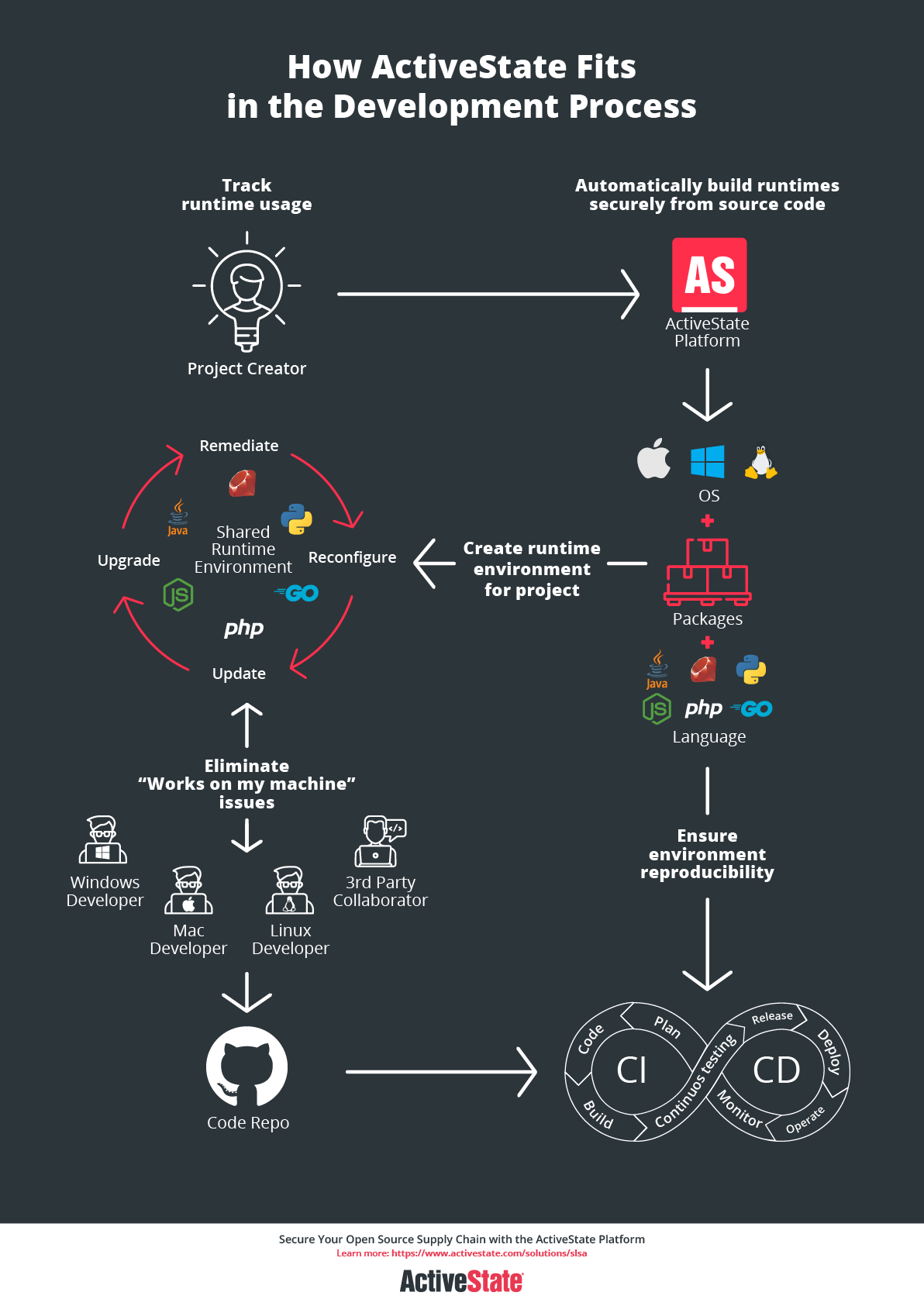Guides
- Getting started with ActiveState
- The ActiveState Platform
- Getting Started with Trusted Publishing to PyPI
- Getting started with the State Tool
- Language runtimes
- History of the ActiveState Platform
- Working with GitHub and ActiveState
- Open source contributor onboarding
- Finding ActiveState on your system
Welcome to ActiveState! Using our Platform, developers and organizations can implement an end-to-end secure software supply chain.
Take a quick tour of the ActiveState Platform.
ActiveState stands as a Trusted Publisher on PyPI, offering developers an intuitive and streamlined package publishing process that encourages the exploration and adoption of ActiveState’s comprehensive development management abilities. The initial Trusted Publisher Release offers: Zero-configuration CI: Publish packages to PyPI without the setup hassle. Cross-platform Compatibility: Build wheels that work seamlessly across different environments. Extended Benefits of Embracing the ActiveState Platform: Effortless Contributor Onboarding: Make it easy for new contributors to start your project.
The State Tool is the CLI client that interfaces with the ActiveState Platform. It can be used to install and manage ActiveState runtimes as well as act as a package manager to install packages from our trusted artifacts package repository.
Use the ActiveState Platform to generate custom runtimes for your development projects.
A quick look back at how things have changed at ActiveState.
By linking together GitHub and ActiveState, you can streamline your development and decrease the time needed to start working on your project, share your project and repo with others, or onboard new team members/employees.
Open source contributors are instrumental in ensuring the success and advancement of open source projects, and creating a smooth and efficient onboarding process for contributors significantly enhances the likelihood of success.
Find out how to locate and confirm if ActiveState products are installed on your system.

- It starts with the project creator who uses ActiveState to Automatically build runtimes securely from source
- ActiveState works to combine the following into a custom runtime
- A language and version specified by the user.
- All the packages, bundles, and dependencies needed for their development environment.
- A Shared Runtime Environment is created. It can be updated, upgraded, remediated, or reconfigured as needed by anyone on the team (depending on member permission status)
- The project is then deployed to Windows, macOS, and/or Linux developer desktops as the runtime environment for their project. It eliminates “works on my machine” issues and can be used to generate…
- First-party code that is checked into a repo, which is then…
- Incorporated into an existing CI/CD process